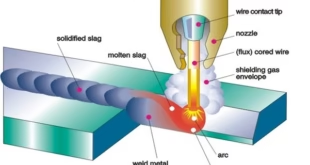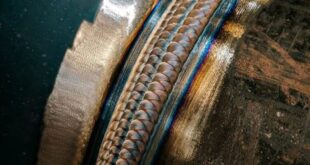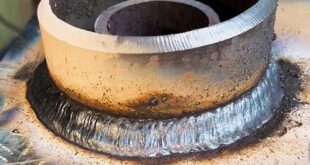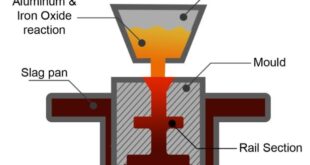Tungsten Carbide Hardfacing and Welding
Introduction
The field of metallurgy and material science has witnessed remarkable advancements, and one such innovation that has garnered significant attention is Tungsten Carbide Hardfacing. This technique involves applying a layer of tungsten carbide, a robust and wear-resistant material, onto the surface of a substrate, enhancing its durability and performance. In this article, we delve into the intricacies of Tungsten Carbide Hardfacing, exploring its definition, the pivotal role it plays in diverse industries, and an overview of the associated welding processes.
Properties of Tungsten Carbide
Tungsten carbide, renowned for its remarkable properties, stands as a formidable material in the realm of hardfacing. The following sections elucidate its key attributes, shedding light on the factors that contribute to its widespread use in diverse industrial applications.
Hardness and Wear Resistance
One of the standout features of tungsten carbide is its exceptional hardness. It ranks among the hardest materials known to man, surpassing even the hardness of steel and titanium. This intrinsic hardness imparts unparalleled wear resistance to tungsten carbide hardfacing applications. In industries where components are exposed to abrasive forces, such as mining and manufacturing, the hardness of tungsten carbide provides a robust defense against wear and extends the lifespan of critical equipment.
Thermal Conductivity
Tungsten carbide exhibits excellent thermal conductivity, making it highly effective in dissipating heat generated during various industrial processes. This property is particularly advantageous in applications where temperature fluctuations are a concern. The ability of tungsten carbide to efficiently transfer heat away from the surface helps prevent overheating and ensures the longevity of components subjected to thermal stress.
Chemical Stability
Chemical stability is a crucial aspect of materials used in harsh environments, and tungsten carbide excels in this regard. It resists chemical corrosion and remains stable in the presence of aggressive substances, making it well-suited for applications in industries such as oil and gas, where exposure to corrosive elements is common. The chemical stability of tungsten carbide contributes to the reliability and durability of hardfaced components in challenging operational conditions.
High Melting Point
Tungsten carbide boasts an exceptionally high melting point, further enhancing its suitability for demanding applications. With a melting point exceeding 5,000 degrees Fahrenheit (2,760 degrees Celsius), tungsten carbide can withstand extreme temperatures without compromising its structural integrity. This property is particularly valuable in applications involving high-temperature processes, such as those found in the aerospace and metalworking industries, where the durability of materials under intense heat is paramount.
Applications of Tungsten Carbide Hardfacing
Tungsten carbide hardfacing, with its exceptional properties, finds a diverse range of applications across various industries. The following sections explore how this robust material enhances the performance and longevity of critical components in key sectors.
Manufacturing and Industrial Equipment
In the realm of manufacturing and industrial processes, where machinery and equipment are subjected to intense wear and abrasion, tungsten carbide hardfacing emerges as a valuable solution. Components such as conveyor belts, mixer blades, and cutting tools benefit from the wear-resistant properties of tungsten carbide. By applying hardfacing techniques, manufacturers can significantly extend the lifespan of these components, minimizing downtime and reducing the frequency of maintenance interventions.
Mining and Drilling Tools
The mining and drilling industry operates in challenging environments, where tools face constant exposure to abrasive materials. Tungsten carbide hardfacing is extensively utilized to enhance the durability and wear resistance of drilling bits, cutting tools, and excavation equipment. This application not only improves the efficiency of mining operations but also contributes to cost savings by reducing the frequency of tool replacements.
Agricultural Implements
Agricultural machinery operates in demanding conditions, particularly during soil preparation and harvesting. Tungsten carbide hardfacing proves invaluable in enhancing the wear resistance of components like plowshares, harrow teeth, and combine harvester blades. By protecting these vital agricultural implements from abrasion, tungsten carbide hardfacing ensures reliable performance, increased efficiency, and longer equipment life in the agricultural sector.
Oil and Gas Industry
The oil and gas industry presents a corrosive and challenging environment for equipment and components. Tungsten carbide hardfacing addresses these challenges by providing exceptional resistance to chemical corrosion. Applications include components in pumps, valves, and drilling equipment, where the chemical stability of tungsten carbide enhances the reliability and longevity of critical parts in oil and gas operations.
Aerospace Components
In the aerospace industry, where precision and durability are paramount, tungsten carbide hardfacing plays a crucial role in enhancing the performance of components subjected to extreme conditions. Aerospace applications include turbine blades, rocket nozzles, and various engine components. The hardness and high-temperature resistance of tungsten carbide contribute to the reliability and longevity of these components, ensuring safe and efficient operation in the aerospace sector.
Tungsten Carbide Hardfacing Techniques
Tungsten carbide hardfacing involves the application of tungsten carbide materials onto a substrate, and this process is executed through various techniques. The following sections provide insights into the two primary categories of hardfacing methods: thermal spraying and welding processes.
Thermal Spraying
Flame Spraying
Flame spraying is a thermal spraying technique where tungsten carbide powder is melted using a flame, typically generated by oxygen and acetylene. The molten particles are then propelled onto the substrate, forming a coating upon solidification. Flame spraying is a versatile method suitable for a range of substrates and is often employed in applications where cost-effectiveness and flexibility are essential.
Plasma Spraying
Plasma spraying involves the use of a plasma arc to heat and propel tungsten carbide powder onto the substrate. This method allows for higher temperatures than flame spraying, resulting in coatings with improved density and bond strength. Plasma spraying is particularly advantageous for applications requiring precision and enhanced performance in demanding environments.
High-Velocity Oxy-Fuel (HVOF) Spraying
High-Velocity Oxy-Fuel (HVOF) spraying is an advanced thermal spraying technique that uses a high-velocity jet of gas to propel tungsten carbide particles onto the substrate. This process produces coatings with exceptional density, hardness, and bond strength. HVOF spraying is known for its efficiency in achieving dense and uniform coatings, making it suitable for critical applications in industries such as aerospace and oil and gas.
Welding Processes
Gas Tungsten Arc Welding (GTAW)
Gas Tungsten Arc Welding (GTAW), commonly known as Tungsten Inert Gas (TIG) welding, is a precise welding process where a non-consumable tungsten electrode is used to create an arc for welding. Tungsten carbide filler material is added to the weld puddle, allowing for controlled application onto the substrate. GTAW is favored for its precision and suitability for thin and delicate components.
Gas Metal Arc Welding (GMAW)
Gas Metal Arc Welding (GMAW), also known as Metal Inert Gas (MIG) welding, involves the use of a continuously fed wire electrode. In tungsten carbide hardfacing, the wire is composed of tungsten carbide particles. The welding arc melts the wire, and the molten material is deposited onto the substrate, forming the hardfacing coating. GMAW is known for its efficiency and is suitable for a wide range of applications.
Submerged Arc Welding (SAW)
Submerged Arc Welding (SAW) is a welding process where a flux covers the welding arc, preventing atmospheric contamination. Tungsten carbide is often added as a hardfacing material in the form of a granular flux. SAW is particularly effective for hardfacing large surface areas and is commonly used in applications where high deposition rates and efficiency are crucial.
Advantages of Tungsten Carbide Hardfacing
Tungsten carbide hardfacing stands out as a highly beneficial technique, offering a myriad of advantages that contribute to improved performance, durability, and cost-effectiveness across various industries. The following sections highlight the key advantages of employing tungsten carbide hardfacing.
Extended Equipment Lifespan
One of the primary advantages of tungsten carbide hardfacing is its ability to significantly extend the lifespan of critical components and machinery. The exceptional hardness of tungsten carbide coatings creates a protective barrier that resists wear, abrasion, and erosion. By mitigating the effects of mechanical stresses, the lifespan of equipment, such as industrial tools, wear parts, and machinery components, is substantially prolonged. This extension of equipment lifespan translates to reduced downtime and increased operational efficiency for industries reliant on reliable and durable machinery.
Increased Resistance to Wear and Abrasion
Tungsten carbide hardfacing excels in providing increased resistance to wear and abrasion, making it an ideal solution for components exposed to harsh operating conditions. Whether it’s mining tools encountering abrasive materials or manufacturing equipment subject to continuous wear, the hard and wear-resistant properties of tungsten carbide coatings ensure that components maintain their integrity over prolonged usage. This increased resistance minimizes the need for frequent replacements, reducing associated costs and disruptions in operational continuity.
Enhanced Performance in Harsh Environments
The robust nature of tungsten carbide hardfacing makes it well-suited for applications in harsh environments, including those with high temperatures, corrosive substances, and abrasive materials. Industries such as oil and gas, where equipment operates in challenging conditions, benefit from the chemical stability and resistance to corrosion provided by tungsten carbide coatings. This enhanced performance ensures that components maintain their functionality and structural integrity, even in the most demanding operational settings.
Cost Savings in Maintenance and Replacement
Tungsten carbide hardfacing offers substantial cost savings in terms of maintenance and replacement expenditures. By reducing the frequency of equipment breakdowns and the need for constant replacements of worn components, industries can achieve significant financial benefits. The upfront investment in tungsten carbide hardfacing pays off in the long run through minimized downtime, lower maintenance costs, and extended intervals between replacements. This cost-effective approach enhances the overall economic viability of industrial operations relying on durable and wear-resistant components.
Challenges and Considerations in Tungsten Carbide Hardfacing
While tungsten carbide hardfacing offers numerous advantages, it is crucial to address various challenges and considerations to ensure optimal outcomes in terms of performance, longevity, and cost-effectiveness. The following sections delve into key challenges and considerations associated with tungsten carbide hardfacing.
Material Compatibility
Ensuring compatibility between the tungsten carbide hardfacing material and the substrate is a critical consideration. Different base materials may have varying thermal expansion coefficients, hardness levels, and metallurgical properties. Incompatibility can lead to issues such as cracking, poor adhesion, or reduced effectiveness of the hardfacing layer. Thorough material compatibility assessments must be conducted to select the appropriate tungsten carbide composition and ensure a reliable bond with the substrate material.
Precision in Application
Precision in the application of tungsten carbide hardfacing is essential to achieving the desired coating thickness, uniformity, and coverage. Inadequate precision can result in uneven coatings, insufficient protection, or excessive material usage. Depending on the chosen hardfacing technique, operators must be trained to apply the coating with precision, taking into account factors such as deposition rate, travel speed, and overall process control. Precision in application directly influences the performance and durability of the hardfaced components.
Post-Welding Heat Treatment
Tungsten carbide hardfacing often requires careful consideration of post-welding heat treatment. While some applications benefit from stress relief or tempering to enhance the mechanical properties of the hardfacing layer, improper heat treatment can lead to issues such as cracking or changes in hardness. The selection of appropriate heat treatment processes and parameters is crucial to achieving the desired balance between hardness, toughness, and adhesion, ensuring the reliability of the hardfaced components.
Quality Control and Inspection
Maintaining high-quality standards throughout the tungsten carbide hardfacing process is paramount. Quality control and inspection procedures are essential to detect defects, irregularities, or variations in coating properties. Non-destructive testing methods, such as ultrasonic testing or visual inspections, help identify potential issues before the hardfaced components are put into service. Rigorous quality control measures contribute to the overall reliability and effectiveness of tungsten carbide hardfacing applications.
Case Studies
The implementation of tungsten carbide hardfacing has yielded both success stories and valuable lessons from failures. Examining these case studies provides insights into the diverse applications, achievements, and challenges associated with tungsten carbide hardfacing.
Examples of Successful Tungsten Carbide Hardfacing Applications
Mining Drill Bits
In the mining industry, tungsten carbide hardfacing has proven highly successful in enhancing the durability of drill bits. By applying tungsten carbide coatings to the cutting edges of drill bits, mining operations have experienced a substantial increase in wear resistance. This has resulted in extended drill bit lifespan, reduced downtime for replacements, and improved overall drilling efficiency.
Industrial Pump Components
In industrial applications, particularly within the oil and gas sector, tungsten carbide hardfacing has been successfully applied to pump components exposed to corrosive fluids. The chemical stability of tungsten carbide coatings has prevented corrosion and wear, leading to increased reliability and extended service life for critical pump parts. This application has resulted in significant cost savings by reducing maintenance frequency and improving operational uptime.
Aerospace Turbine Blades
Aerospace components, such as turbine blades, demand materials that can withstand extreme temperatures and mechanical stresses. Tungsten carbide hardfacing has been employed to enhance the wear resistance and thermal stability of turbine blades. This has contributed to improved performance, increased component lifespan, and enhanced operational safety in aerospace applications.
Lessons Learned from Failures and Remediation
Inadequate Material Compatibility in Industrial Mixers
In an industrial mixing application, improper assessment of material compatibility led to a hardfacing failure. The chosen tungsten carbide composition did not adequately match the substrate material, resulting in poor adhesion and premature delamination. The lesson learned from this failure emphasized the importance of thorough material compatibility testing to ensure a robust bond between the hardfacing layer and the substrate.
Insufficient Precision in Agricultural Tools
In the agricultural sector, a case study revealed that insufficient precision during the hardfacing process of plowshares led to uneven coatings and compromised performance. The hardfaced layer exhibited areas of inadequate coverage, leading to premature wear in certain regions. The lesson learned highlighted the necessity of precise application techniques to achieve uniform coatings and maximize the effectiveness of tungsten carbide hardfacing in agricultural implements.
Lack of Post-Welding Heat Treatment in High-Stress Components
In an industrial setting with high-stress components, the omission of post-welding heat treatment resulted in brittleness and cracking in the tungsten carbide hardfacing layer. The lesson learned emphasized the critical role of post-welding heat treatment in achieving the right balance of hardness and toughness, especially in applications subject to significant mechanical stresses.
Future Trends in Tungsten Carbide Hardfacing
As technology and materials science continue to advance, the future of tungsten carbide hardfacing holds promising developments in research, innovation, and new applications. The following sections explore anticipated trends in these key areas.
Research and Development
Advanced Tungsten Carbide Compositions
Ongoing research is expected to focus on developing advanced tungsten carbide compositions tailored for specific applications and industries. Researchers are likely to explore new alloying elements and processing techniques to enhance the properties of tungsten carbide, including hardness, toughness, and chemical resistance. This research aims to push the boundaries of what tungsten carbide can achieve in terms of wear resistance and overall performance.
Nanostructured Tungsten Carbide
The exploration of nanostructured materials is a burgeoning area of research. Future developments may involve the integration of nanostructured tungsten carbide into hardfacing applications. Nanostructured materials often exhibit unique properties, and incorporating them into hardfacing coatings could lead to enhanced performance, increased hardness, and improved resistance to wear at the nanoscale.
Innovations in Hardfacing Techniques
Additive Manufacturing and 3D Printing
The advent of additive manufacturing and 3D printing technologies is likely to influence the field of tungsten carbide hardfacing. These techniques offer precise control over material deposition, allowing for intricate and customized hardfacing patterns. Additive manufacturing may enable the creation of complex geometries with varying tungsten carbide concentrations, optimizing wear resistance based on specific component requirements.
Hybrid Hardfacing Methods
Innovations may lead to the development of hybrid hardfacing methods that combine different techniques for optimal results. Combining thermal spraying with advanced welding processes, for example, could provide a synergistic effect, offering the benefits of both high deposition rates and precise application. Hybrid methods aim to maximize efficiency and tailor hardfacing solutions to diverse industrial needs.
Emerging Applications and Industries
Renewable Energy Components
As the demand for renewable energy sources grows, tungsten carbide hardfacing may find applications in components subjected to the challenging conditions of renewable energy production. This includes hardfacing for components in wind turbines, solar power systems, and other renewable energy infrastructure, where resistance to environmental factors is crucial for long-term reliability.
Medical and Biotechnological Devices
The medical and biotechnological sectors may witness emerging applications of tungsten carbide hardfacing. Components such as surgical instruments, cutting tools used in medical procedures, and devices for biotechnological applications could benefit from the wear resistance and precision offered by tungsten carbide coatings.
FAQs
How long does tungsten carbide hardfacing last?
Tungsten carbide hardfacing can significantly extend the lifespan of surfaces, with durability depending on factors such as application and maintenance.
Is tungsten carbide suitable for all welding applications?
While tungsten carbide is versatile, its suitability depends on the specific requirements of each welding application.
What challenges might arise during the welding process?
Challenges such as bonding issues or material compatibility may arise, emphasizing the need for skilled implementation.
Are there environmentally friendly options for tungsten carbide?
Recycling and reusability initiatives contribute to environmentally friendly practices in tungsten carbide hardfacing.
How can I maintain tungsten carbide hardfaced surfaces?
Regular inspections and routine maintenance checks are essential for the effective upkeep of tungsten carbide hardfaced surfaces.
Conclusion
In conclusion, the enduring appeal of tungsten carbide hardfacing lies in its ability to offer a robust defense against wear and abrasion, contributing to enhanced equipment lifespan, reduced maintenance costs, and improved operational efficiency across diverse industries. As technological advancements continue to unfold, tungsten carbide hardfacing remains a cornerstone in the pursuit of durable and reliable industrial components.
 Welding of Welders All about Welding and Welders
Welding of Welders All about Welding and Welders




